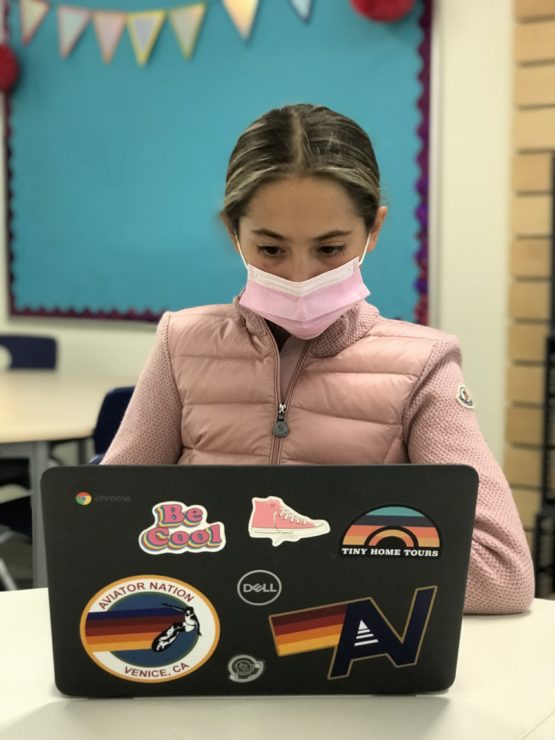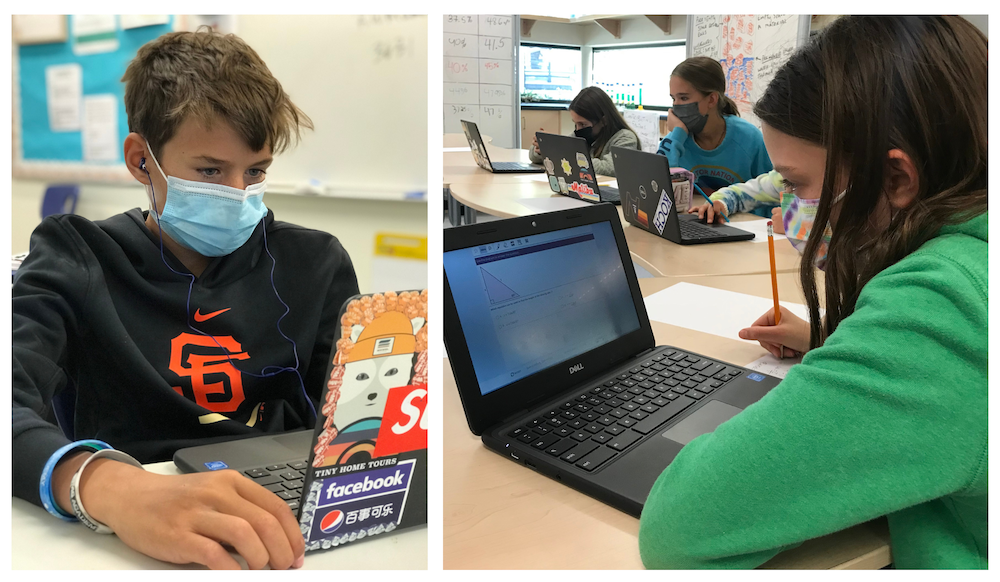Stories
Testing, testing: introducing MAP Growth
October 6, 2021
Adam Hancock, Lower School Head, explains the “why” of Aspen Country Day School’s new assessment program

Students of today face a challenge previously unknown in the world of education. Professional educators, researchers, and parents alike recognize that COVID-19 has affected students’ academic growth. The question is, how do we measure student progress?
Well before the pandemic, Aspen Country Day School was already tackling this question. The typical standardized testing we were previously using, the ERB, measures a child’s performance on one test on one day, but it doesn’t show how a student is growing as a learner. So a team of teachers and administrators gathered to investigate a variety of leading testing tools. They ultimately chose MAP Growth, a three-times-per-year program from NWEA. This month, ACDS students in Kindergarten through Seventh Grade are taking the first of these tests, all on Chromebooks or iPads.
The timing is ideal because meaningful data on student performance is more important than ever. A recent article from The 74 sums it up:
After two straight years with few assessments, teachers lack critical information about how students have fared during COVID-19. But treating tests as they were always intended to be used — to measure the skills students have mastered, identify where they need additional support and direct resources accordingly — is essential for gauging what students have and have not learned during the course of the pandemic, what other skills they need to master and what support they need to achieve that.
To meet students where they are as individuals, thorough educators assess their students. In teacher-speak, this is called formative assessment. Formative differs from summative in that a formative probe is not a graded effort. It does not reflect mastery or lack thereof, but rather it illuminates particular areas of strength and challenge. Formative assessment enables teachers to recognize each student as an individual learner on a distinctive journey.

Here at Aspen Country Day, we are excited to begin using the MAP Growth program. MAP stands for Measures of Academic Progress. This adaptive, formative assessment will provide ACDS teachers with a continuum of data richer than any we have had previously. Each student in Kindergarten through Seventh Grade will take a series of MAP Growth online assessments three times this year: fall, winter, and spring.
This assessment is nationally normed with test reports from more than 10 million students. The comparative data can be benchmarked vis a vis other independent schools and will provide interesting insights into the effectiveness of our academic program. In addition to the large-scale data trends, the individual information gleaned from the MAP Growth assessment will guide our teachers as they seek to best meet your child’s learning needs. We are looking forward to using this powerful tool to help make learning at ACDS even more personal for each child.
Who? All students in Kindergarten to Seventh Grade
What? MAP Growth testing in reading and math in Kindergarten to Fifth Grades; Middle School MAP Growth testing includes reading, math, and language usage.
When? Our initial round of assessments is happening now, in the first two weeks of October. We will test again in the winter, and then again in the spring. In this way we will have a measure of academic growth for each child over the course of a full academic year.
Basics: All tests are taken on a computer — Chromebooks or iPads. Kindergarters to Second Graders take tests that last 40 minutes, administered in two 20-minute sessions. Third to Seventh Graders spend about 45 to 60 minutes per session.
How did my child do? MAP Growth gives teachers insights into the growth of their students over the course of an academic year. Once we have a full year of data points for each learner (fall, winter, and spring assessments), we will be positioned to communicate with parents about how students have grown in their academic pursuits this year.


